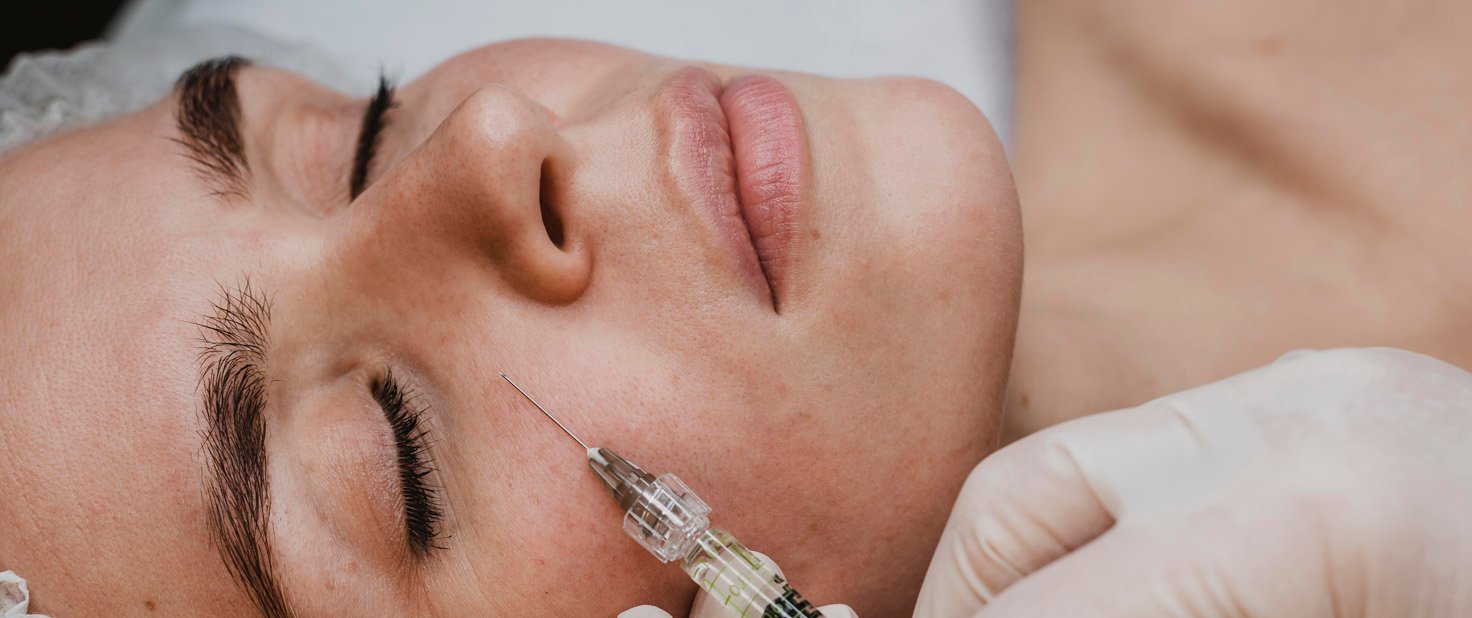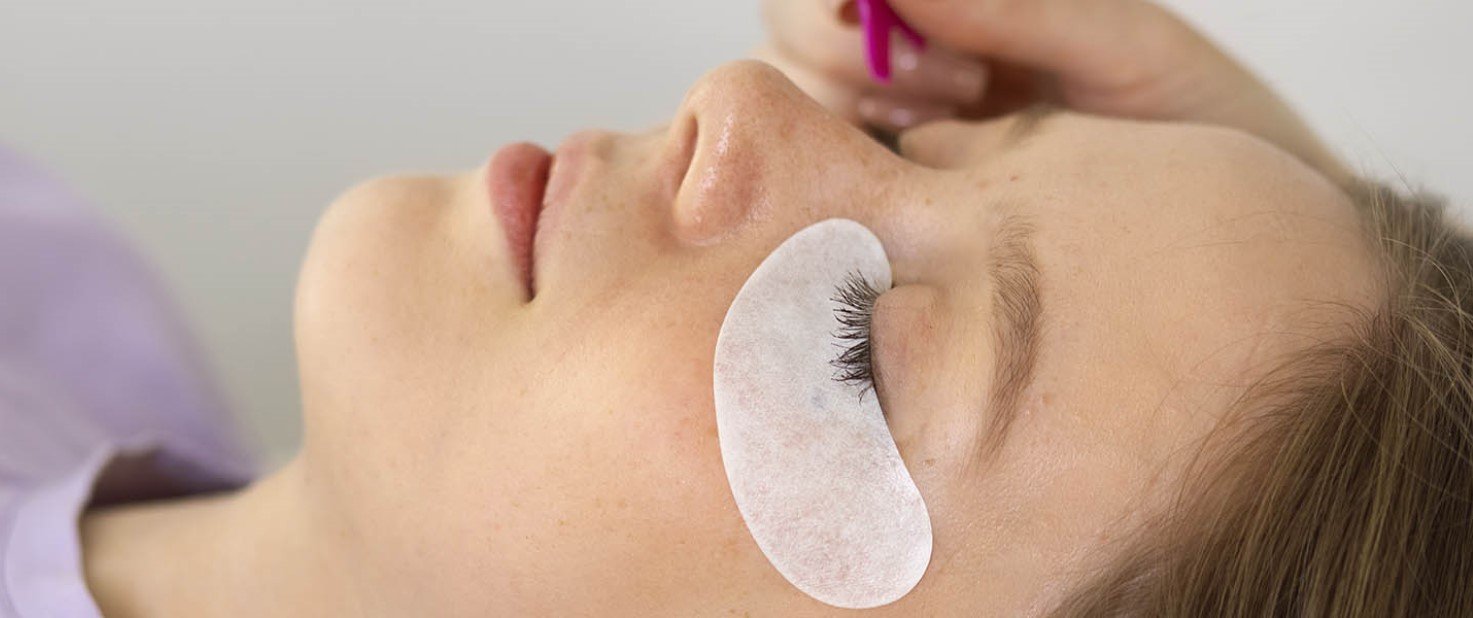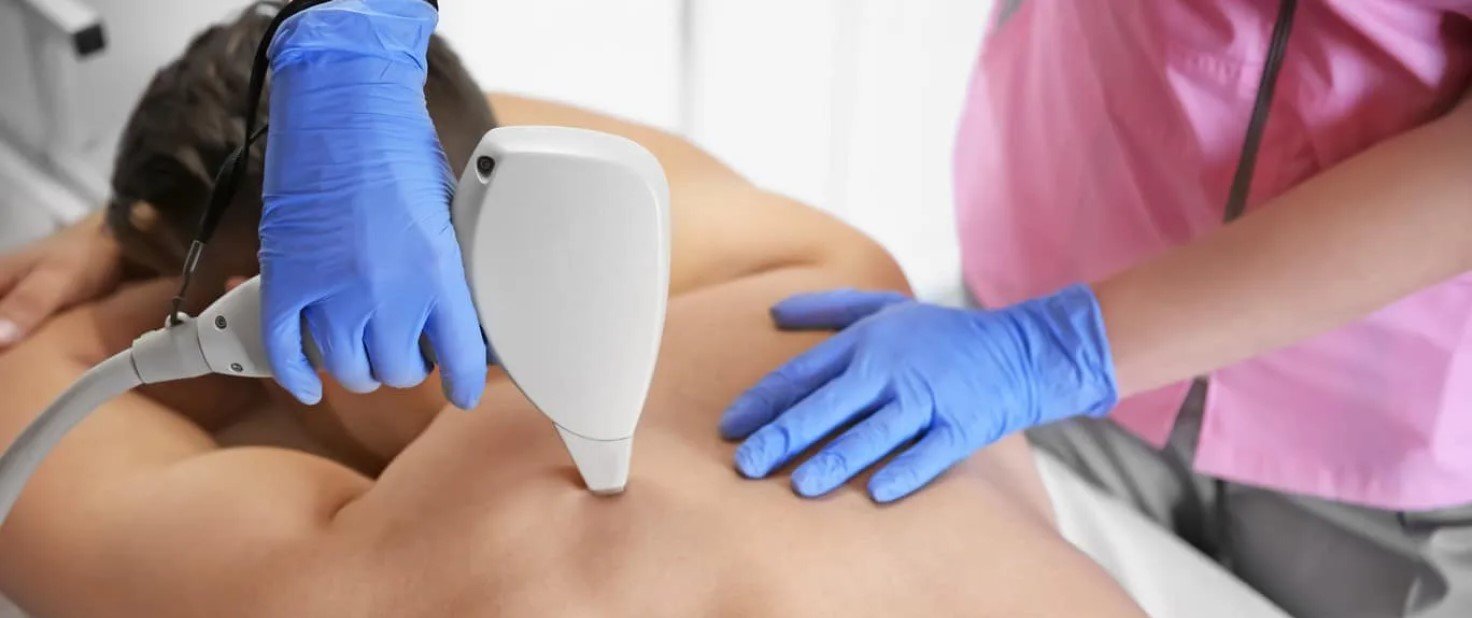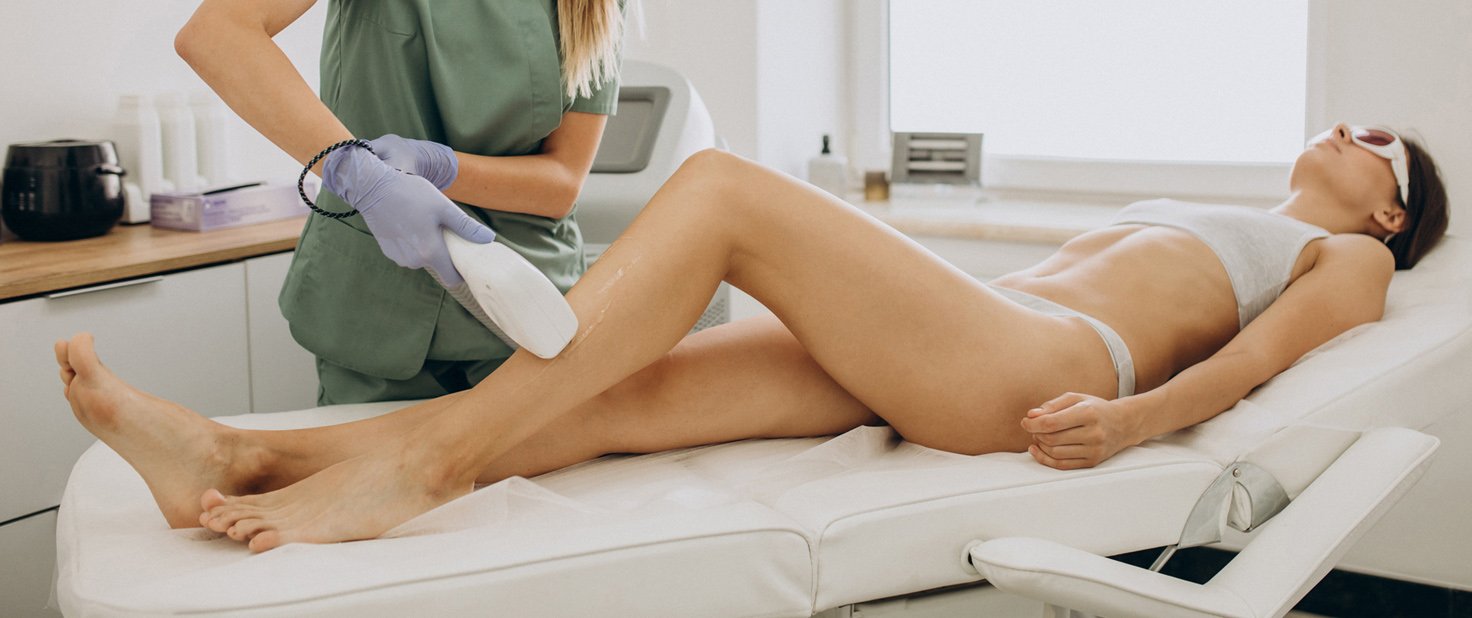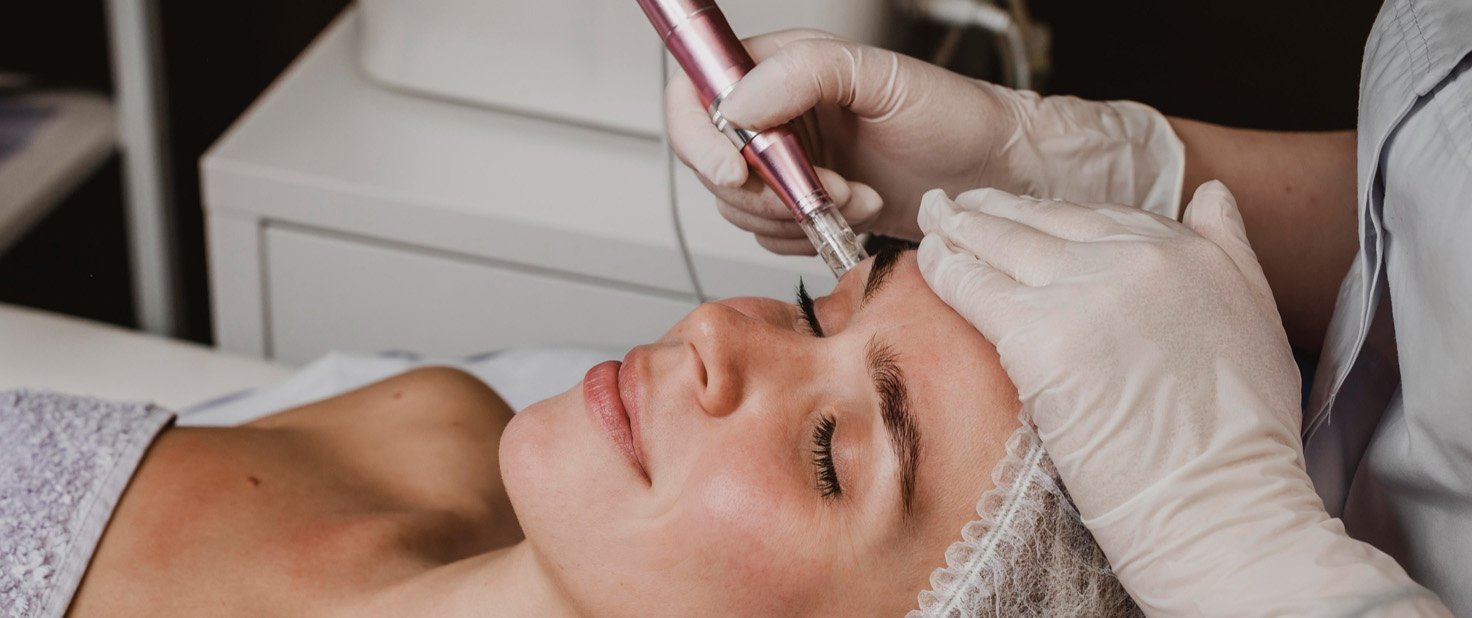What Is Laser Hair Removal for Legs?
Laser hair removal for legs is growing in popularity as a long-term solution for unwanted hair. If you are new to the concept, imagine a process that uses technology to target hair at its root – literally.
At its core, leg laser hair removal involves the use of highly concentrated light beams of a laser to remove hair. When the laser is directed onto the skin, it emits a specific wavelength of light that is absorbed by the skin pigment called melanin in the hair follicles. Because melanin is more present in hair than in the surrounding skin, the laser selectively targets the hair follicle without damaging the nearby tissue.
Once absorbed, the light energy is converted into heat. This heat damages the tube-shaped sacs in the skin (also known as hair follicles) that are responsible for producing hair. By impairing these follicles, future hair growth in the treated area is significantly reduced or even prevented altogether. Over a series of treatments, this damage effectively stops the hair from regrowth.
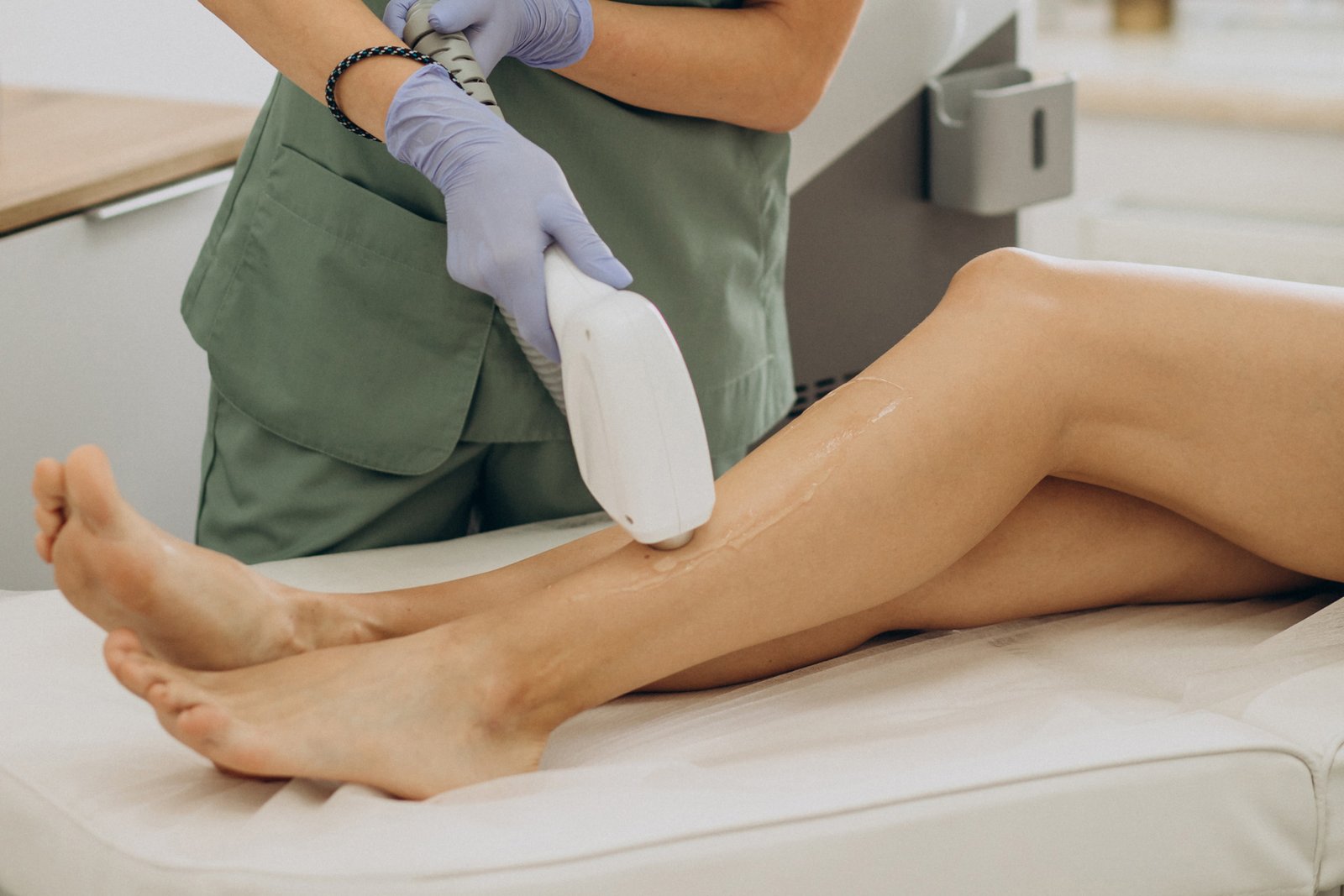
The laser procedure at Body Silk Clinic is performed by a registered laser therapist who adjusts the laser settings based on factors, such as skin tone, hair colour, and the corse state of the hair being treated. For instance, the hair on the upper legs is often finer while the hair on the lower legs is corser which may require different laser settings to be used during a laser treatment. Each session focuses on the areas of active hair growth, as hair grows in cycles (called anagen, catagen, and telogen phases). Since not all hair is active at the same time, spaced-out appointments (usually every 4 to 6 weeks) are necessary to catch all the hair during their growth phase.
Despite being effective, laser hair removal works better for some than others. Dark, coarse hair absorbs laser light more effectively, making the process quicker for individuals with light skin and dark hair. However, advancements in technology today allow more devices to cater for various skin tones and hair colours. It is always a good idea to consult with our specialists to understand what a laser treatment can do for you.
The sensation during the treatment is often described as similar to a rubber band snapping against the skin. While it is not entirely painless for everyone, anaesthetic creams and modern laser systems designed with mild cooling mechanisms help minimise discomfort.
Ultimately, laser hair removal provides longer-lasting results compared to shaving or waxing. Whether clients are tired of shaving stubble or battling ingrown hairs, this treatment offers convenience with confidence.
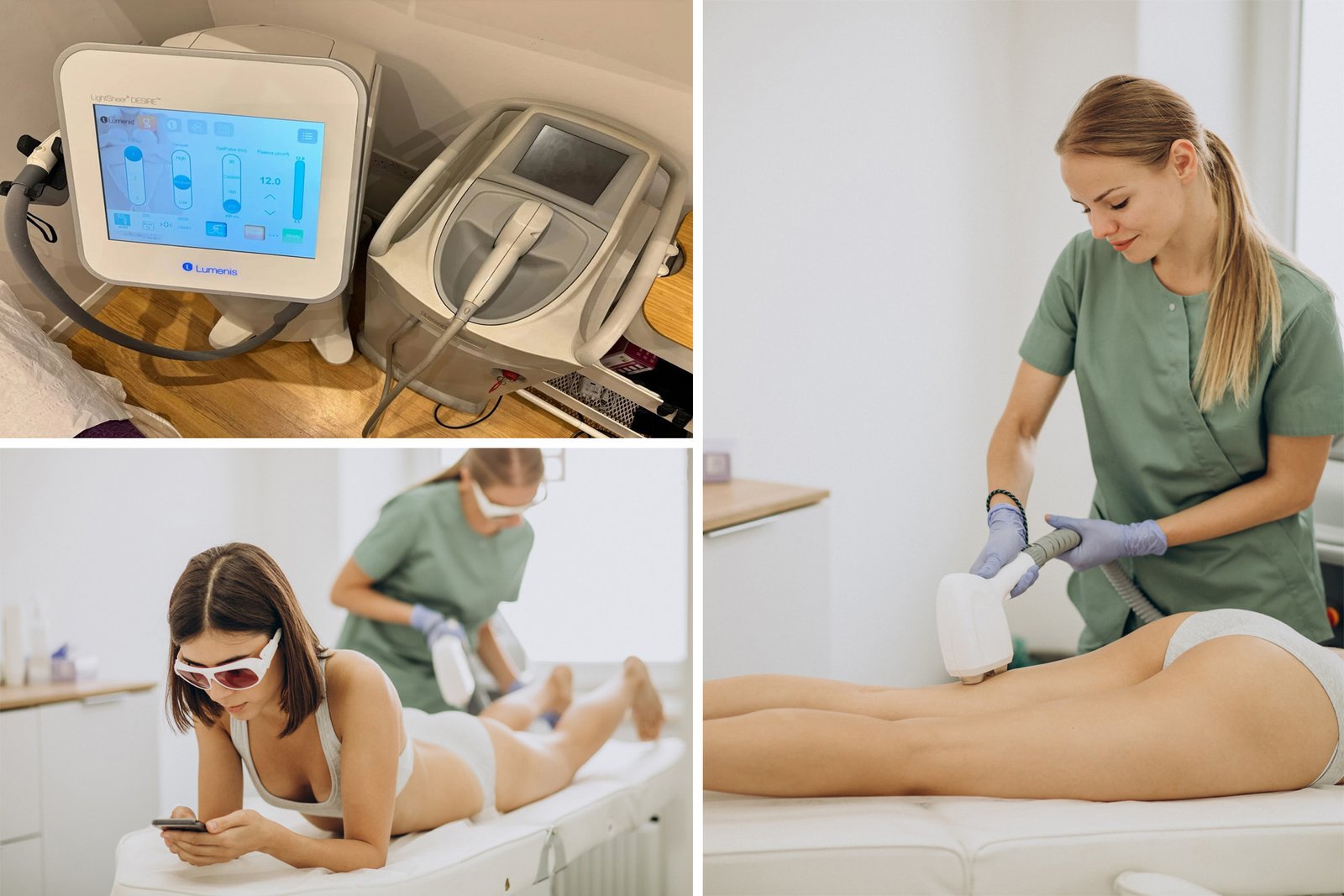
About Body Silk Clinic
Safe Treatment
Effective Treatments
Over 1000 happy clients every year
Loyalty points towards FREE treatments
Laser Hair Removal on Legs: How It Works
For long-term results, maintenance treatments may be necessary as hair growth on the legs may fluctuate due to hormonal changes or other factors. Our team of experienced laser therapists will work with you to create a personalised treatment plan and schedule follow-up appointments accordingly. With consistent laser treatments and proper aftercare, our clients can enjoy smooth and hair-free skin on their legs for an extended period of time, in many cases – permanently. In this video, our clients share their experience about their laser hair removal treatments after having several laser hair removal sessions.
Laser hair removal on legs price
view all prices|
Laser full legs
Laser hair removal targeting the full legs for a smooth, hair-free result
|
£250 |
|---|---|
|
Laser feet
|
£55 |
|
Laser half legs (incl. the knees)
Half-leg hair removal may include either the upper legs or lower legs. Each of these body areas include a laser treatment for the knees.
|
£185 |
|---|

Different Types of Hair in the Context of Leg Laser Hair Removal
When considering leg laser hair removal, it is essential to understand that the type of hair may play a significant role in determining the effectiveness of the treatment. Hair on the legs may vary greatly from one individual to another in terms of colour, thickness, and density. These factors may influence how well the laser targets and removes unwanted hair.
The LightSheer diode laser used at Body Silk Clinic works by targeting the pigment, or melanin, in hair follicles. Dark, thick hair tends to respond best because it absorbs the laser energy more effectively, allowing the heat to destroy the follicle with precision. This is why individuals with light skin and darker hair often see quicker, more noticeable results. On the other hand, lighter-coloured hair, such as blonde, red, or grey, contains less melanin, making it more challenging or impossible in some cases for the laser to detect it and target. Grey and ginger hair generally does not respond to the laser treatment. Electrolysis may be a better option to achieve permanent hair reduction. However, blond or other types of fair hair may still respond to the treatment if there is some melanin present in the hair root. Our laser specialists will be able to advise during a consultation whether your hair may be able to respond to the laser treatment well.
Hair thickness is another important consideration. Coarse, thicker hair is generally easier to treat because it contains more pigment for the laser to latch onto. Finer, thinner hair, although less noticeable, tends to be harder to remove entirely with laser treatments and may require extra laser sessions.
Fortunately, advancements in laser technology have increased accessibility for individuals with a wide variety of hair and skin types. Devices with adjustable settings and new wavelengths have made it possible to treat lighter hair successfully or darker skin tones that might previously have been unsuitable candidates. No matter what your hair type is, a consultation with one of our trained laser practitioners may help make an informed decision about your laser hair removal treatment. Your hair, skin, and overall suitability for the procedure will be assessed alongside any possible contraindications with your current medication, if any, to create a tailored approach that ensures safe and effective results for smooth, hair-free legs.
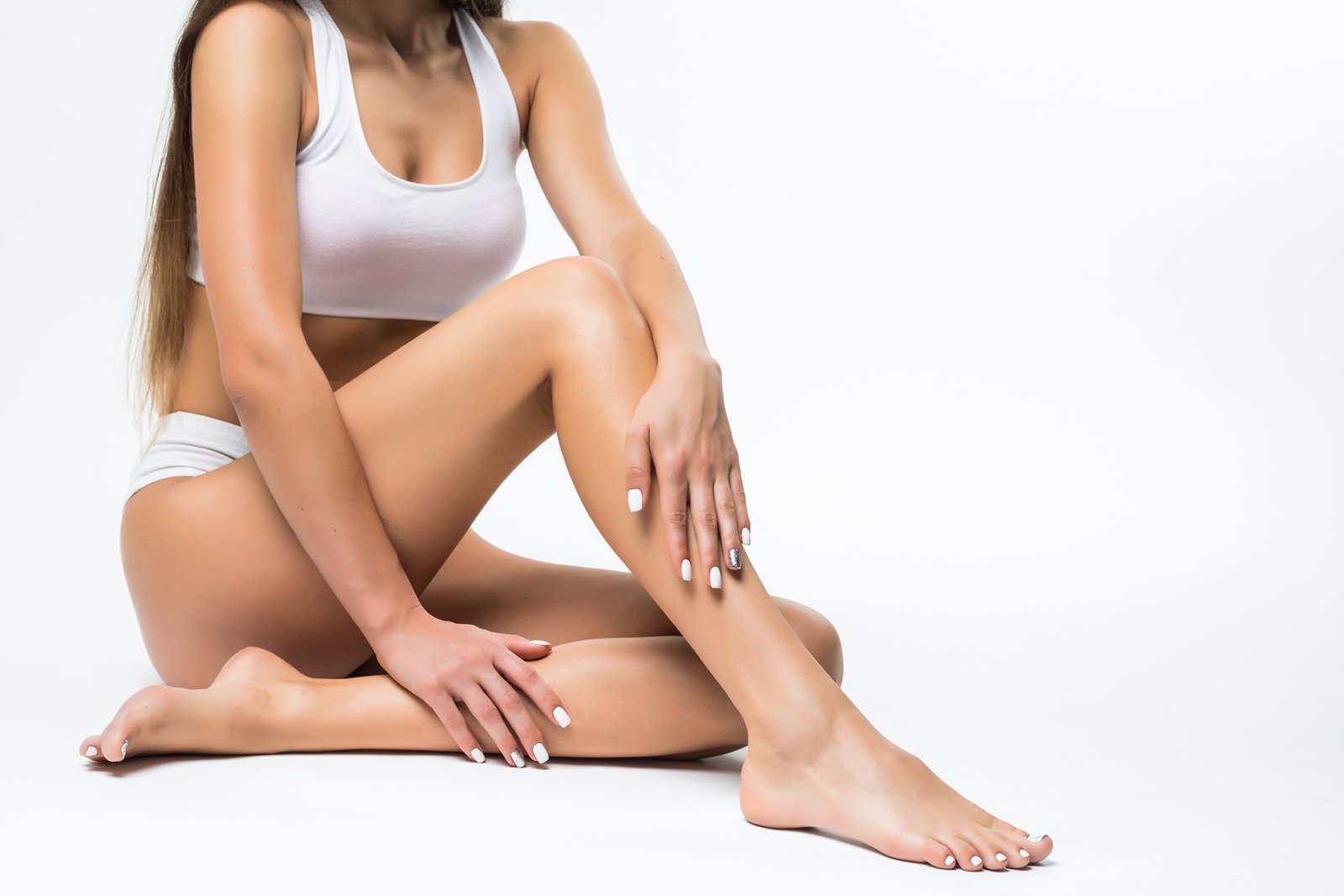
How Can I Get Rid of Hair?
Getting rid of unwanted hair can be a personal choice, and there are many leg hair removal methods available to suit different preferences, budgets, and needs. Understanding each option can help make an informed decision.
Shaving is often the quickest and most accessible method. It involves using a razor to cut the hair at the surface of the skin. It’s completely painless and affordable, making it a popular choice for many. However, the results are short-lived since it does not remove the hair from the root, meaning regrowth can appear within a day or two. Additionally, improper shaving techniques can sometimes lead to cuts, irritation, or ingrown hair.
Plucking, tweezing, or threading is another common method, especially for small areas, such as eyebrows or facial hair. It involves pulling out each hair individually with tweezers or a thread, removing it from the root. While the results can last longer than shaving, often a few weeks, plucking can be time-consuming and may cause discomfort. Threading is reported to be more comfortable than plucking or tweezing but the result is very similar. This method is not very practical for larger areas, such as legs or arms.
Depilatory creams offer a pain-free alternative for temporary hair removal. These creams work by breaking down the hair structure using chemicals, allowing the hair to be wiped away easily. The process is simple and convenient, but it is important to perform a patch test beforehand, as some individuals may find the creams irritating to their skin. The hair regrows relatively quickly, similar to shaving, as it is only removed at the skin surface.
Waxing, on the other hand, may deliver long-lasting results as it removes hair from the root. This method involves applying wax to the skin, placing a paper strip over the wax in the case of strip waxing or hot wax without a paper strip, and quickly pulling it away to remove the hair. Strip waxing is used for larger body areas, such as back and shoulders, abdomen, arms and legs. Hot waxing is used for smaller and/or sensitive areas, such as face, underarms and bikini. Both types of waxing keep the skin smooth for up to a few weeks. Some individuals with sensitive skin may have a temporary redness or irritation that goes away in a few hours. It is also worth noting that hair needs to grow out to a certain length before it can be effectively waxed. At Body Silk Clinic, we offer both types of waxing and work with the best products available at the market to ensure maximum safety and comfort for our clients.
Electrolysis is a more permanent option for hair removal on legs. It involves a thin needle with an electric current applied to destroy the hair follicle. This process is extremely effective and works on all hair and skin types. However, it can be time-consuming and usually requires multiple sessions to achieve desired results. Though highly effective, some individuals may find the process uncomfortable or expensive, depending on the size of the area being treated. This hair removal method may be most suitable for individuals with ginger, grey or blond hair that does not have pigment in the hair root. Individuals with other hair types may want to consider laser hair removal.
Laser hair removal is another advanced method that may provide long-term or even permanent results. This treatment uses laser energy to target and destroy hair follicles, significantly reducing regrowth. While not completely permanent for every client, many individuals experience extended periods (months or years) of smooth, hair-free skin with a minimum or no maintenance. Laser hair removal is best suited for individuals with darker hair and lighter skin, although modern technology expanded its effectiveness for a wider range of skin and hair types. It does require multiple sessions over several months (usually within a space of 12 months) and may involve a higher upfront cost, but the convenience that it offers over time can make it worthwhile.
Each method of hair removal has its own advantages and downsides, and the best choice ultimately depends on everyone’s personal preferences, level of comfort, long-term goals and the budget. Whether one is looking for a quick fix or a more lasting solution, there is a method suited for everyone’s needs.
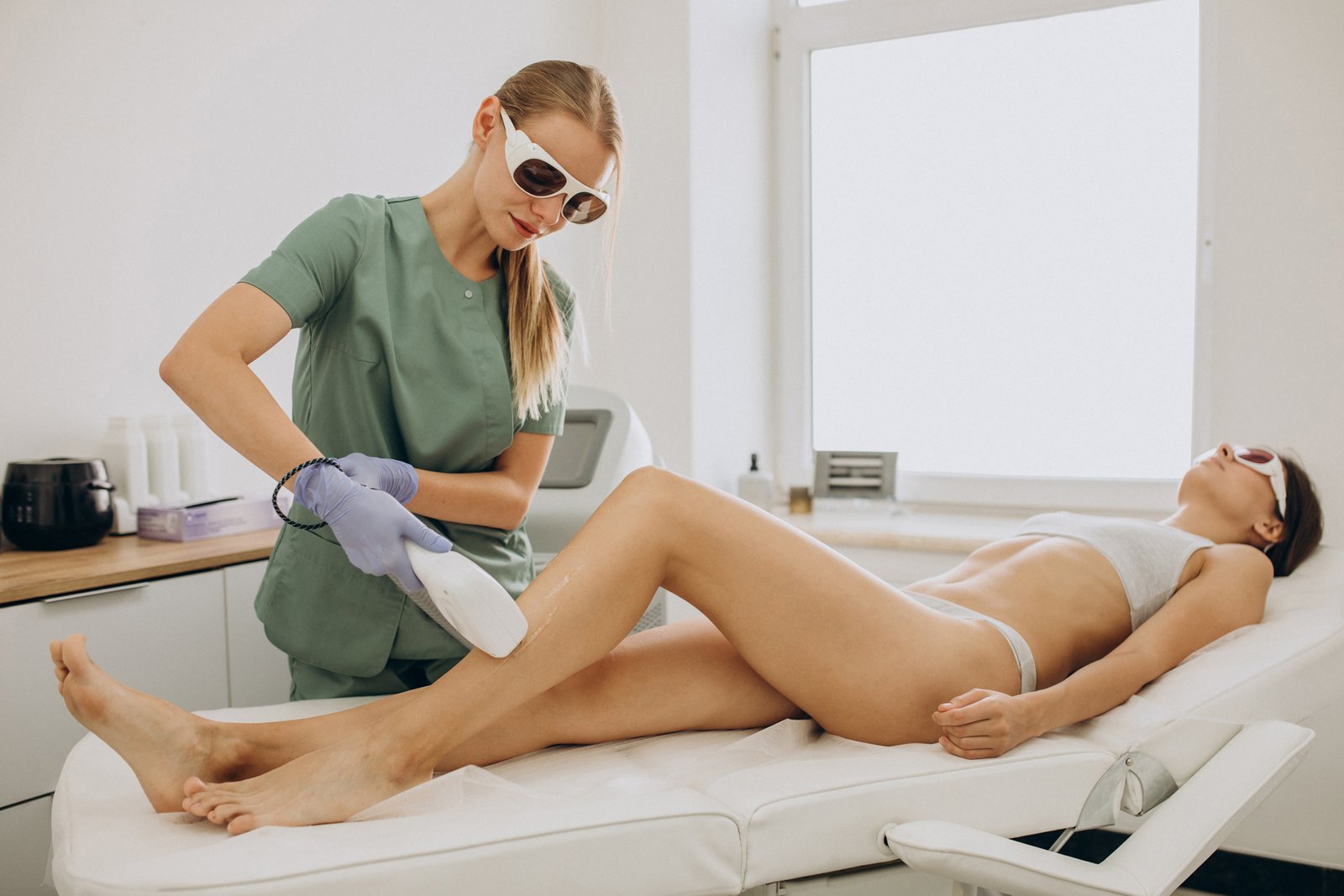
Laser Hair Removal Different Leg Treatment Areas
- Half-Leg Treatment
- Full Leg Treatment
Laser hair removal is a versatile treatment that can target various areas of the body, with the legs hair removal being one of the most popular among individuals seeking smooth, hair-free skin. When it comes to the legs, the treatment is typically divided into two main areas – the upper legs and the lower legs – each with its own considerations and benefits in the context of half-leg laser hair removal and laser hair removal for full legs.
Half-leg hair removal may include either the upper legs or lower legs. Each of these body areas include a laser treatment for the knees. The area of upper legs includes the thighs. The internal thigh area closer to the bikini may often have thicker and denser hair in many individuals. Laser hair removal for the upper legs focuses on reducing or eliminating this hair, providing a smoother and cleaner appearance. Some of the laser clients at Body Silk Clinic combine bikini laser hair removal treatment with upper legs or full-leg laser treatment. The outer thighs of the upper legs may have finer areas with hair and are less sensitive to discomfort that some individuals may experience during their laser hair removal session. Treating the upper leg area may be particularly appealing to those who regularly wear shorts, dresses, or swimwear, as it offers a consistent and polished look without the need for frequent shaving or waxing. The process may also help address issues, such as ingrown hair or skin irritation caused by other hair removal methods. Since the upper legs cover a larger surface area, treatment sessions may take slightly longer depending on how large this area is in each individual.
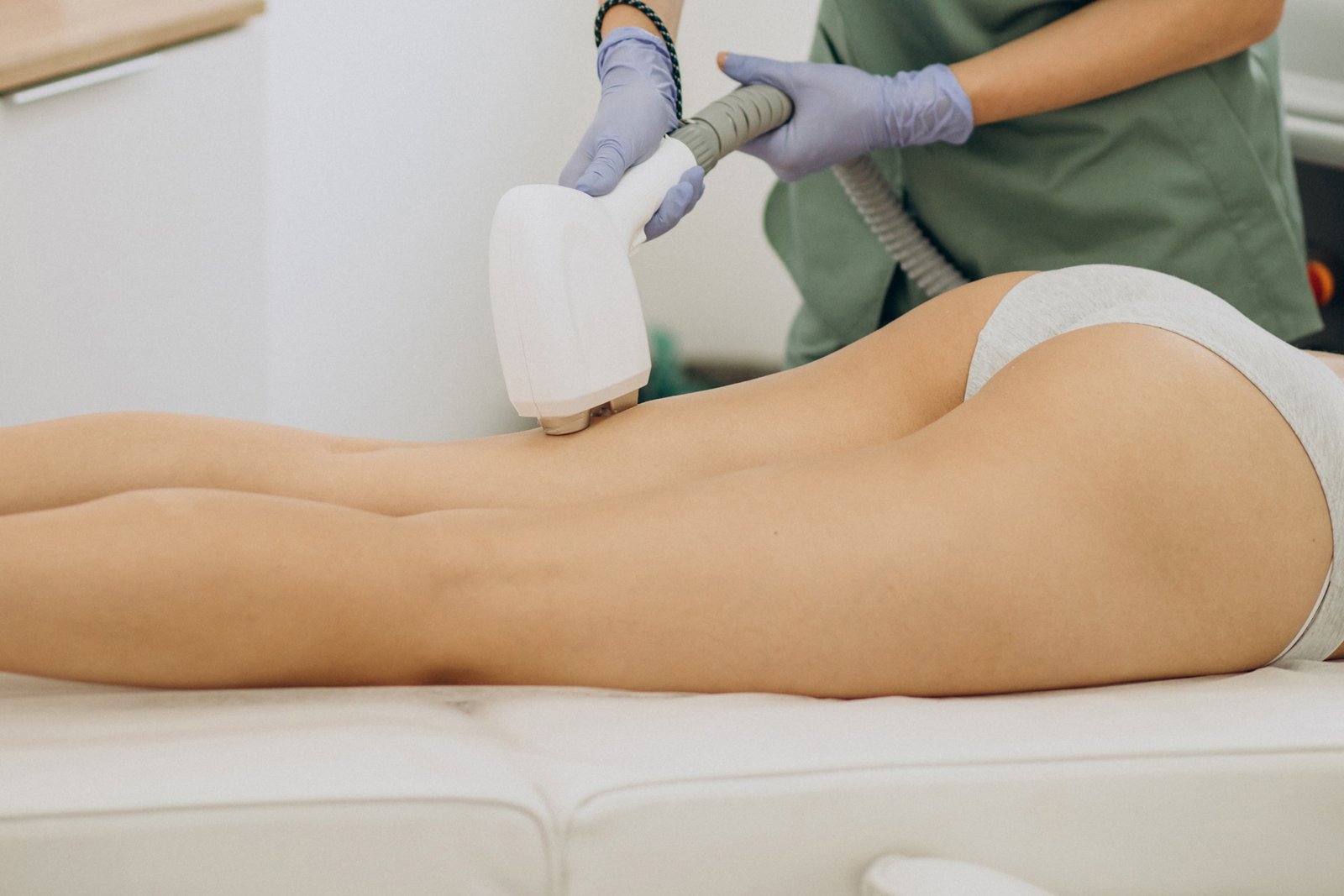
On the other hand, the lower legs – spanning from the knees down to the ankles – are often the most requested area for laser hair removal. This body area tends to be where hair is most prominent and visible, especially in the warmer months of the year when shorts and skirts are more commonly worn. Unlike the upper legs, the lower legs often have more prominent hair growth in terms of the density and colour, making them an ideal candidate for laser treatments. A significant benefit of targeting this area is the long-term smoothness it may offer, allowing individuals to say goodbye to the frequent shaving or waxing of their calves, shins, and ankles. Laser hair removal for the front side of the lower legs may cause discomfort in some individuals due to the bone exposed to the light from the laser as the bone is not so much protected by the muscle tissue on the shin area. Additionally, for those who experience fast regrowth after traditional hair removal methods, laser treatment may provide a perfect solution, reducing the frequency and appearance of hair over time.
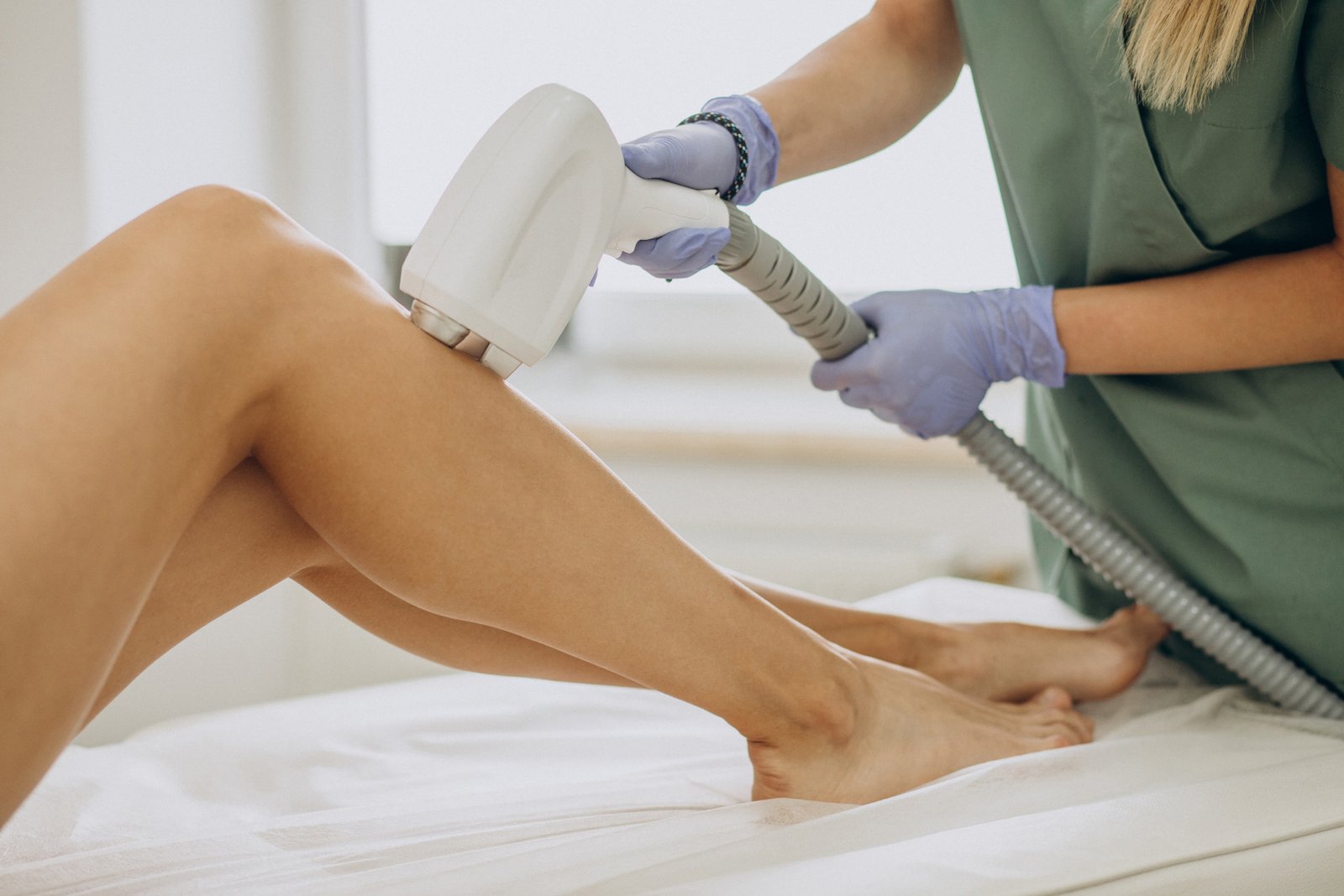
Whether focusing on the laser half-leg treatment for upper or lower legs, laser hair removal works by using concentrated light energy to target melanin, the pigment in the hair root. This energy is then converted into heat that damages the follicle and inhibits its ability to produce new hair in the future. While the technology is highly effective, achieving the desired level of smoothness often requires multiple sessions, as hair grows in cycles and the laser is only effective on follicles in the active growth phase. Most people begin to notice significant difference after a few treatments, with each session spaced several weeks apart to ensure thorough coverage of all hair cycles.
It is also worth noting that individual results may vary based on the tone of the skin, hair colour and texture.
Ultimately, addressing both half-leg and full-leg areas with laser hair removal may be a game-changer for those seeking a more permanent and hassle-free approach to hair reduction. The convenience, along with the long-term benefits of smoother skin, makes it a highly appealing option for anyone tired of dealing with traditional hair removal methods. While the treatment requires an initial time and financial commitment, the freedom it brings from constant maintenance can make it a worthwhile investment in the long run.
About our laser
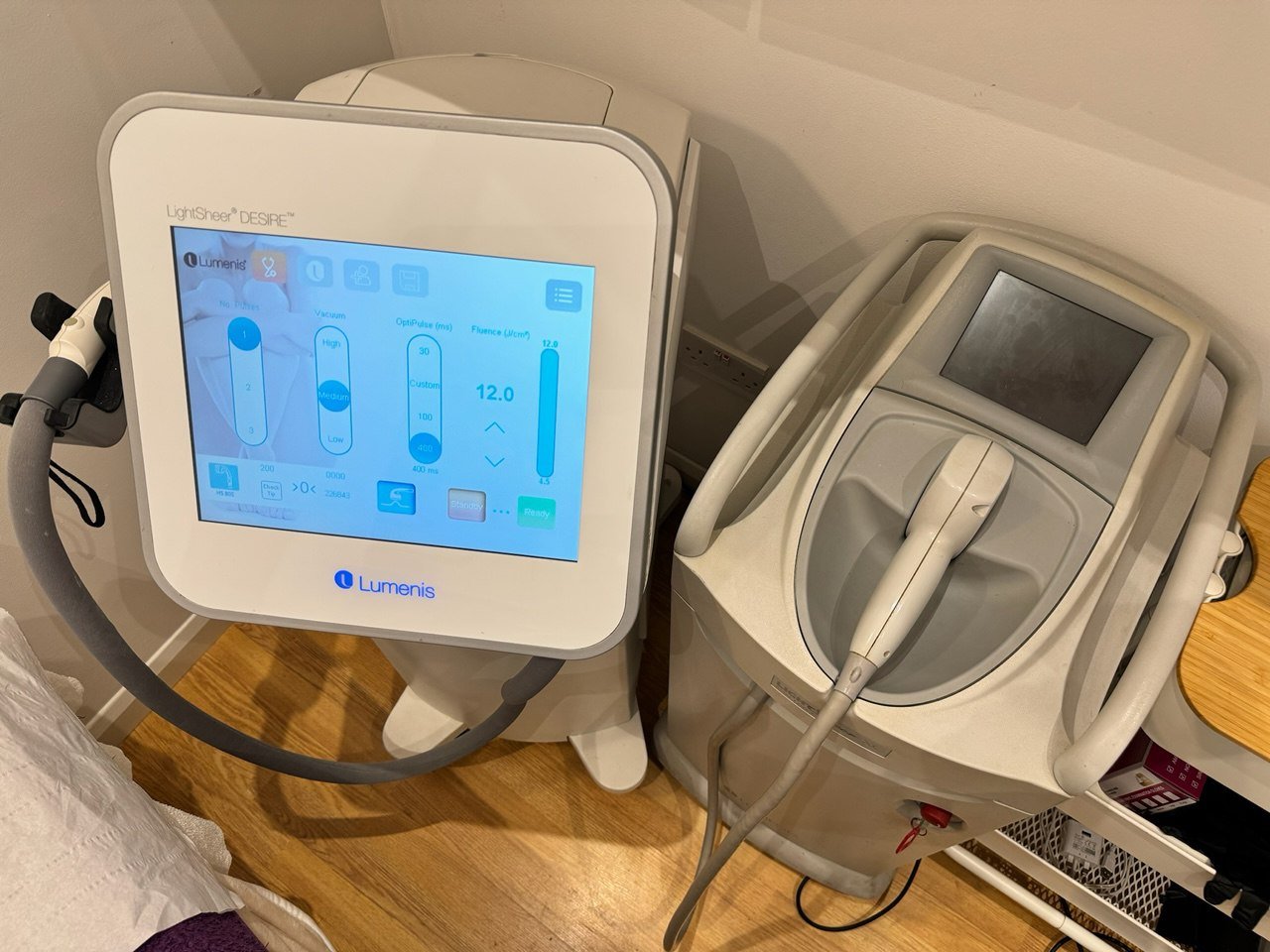
Key Features
- Precise wavelength: utilises 805 nm wavelength, allowing treatment for a wider range of skin and hair types.
- High-speed integrated technology: ensures fast treatments, ideal for larger areas, such as full legs and full back.
- ChillTip™ and vacuum assisted technology: enhances patient’s comfort by cooling the skin and reducing discomfort during treatment.
- Versatile handpieces: HS and XC handpieces for tailored treatments on various body areas.
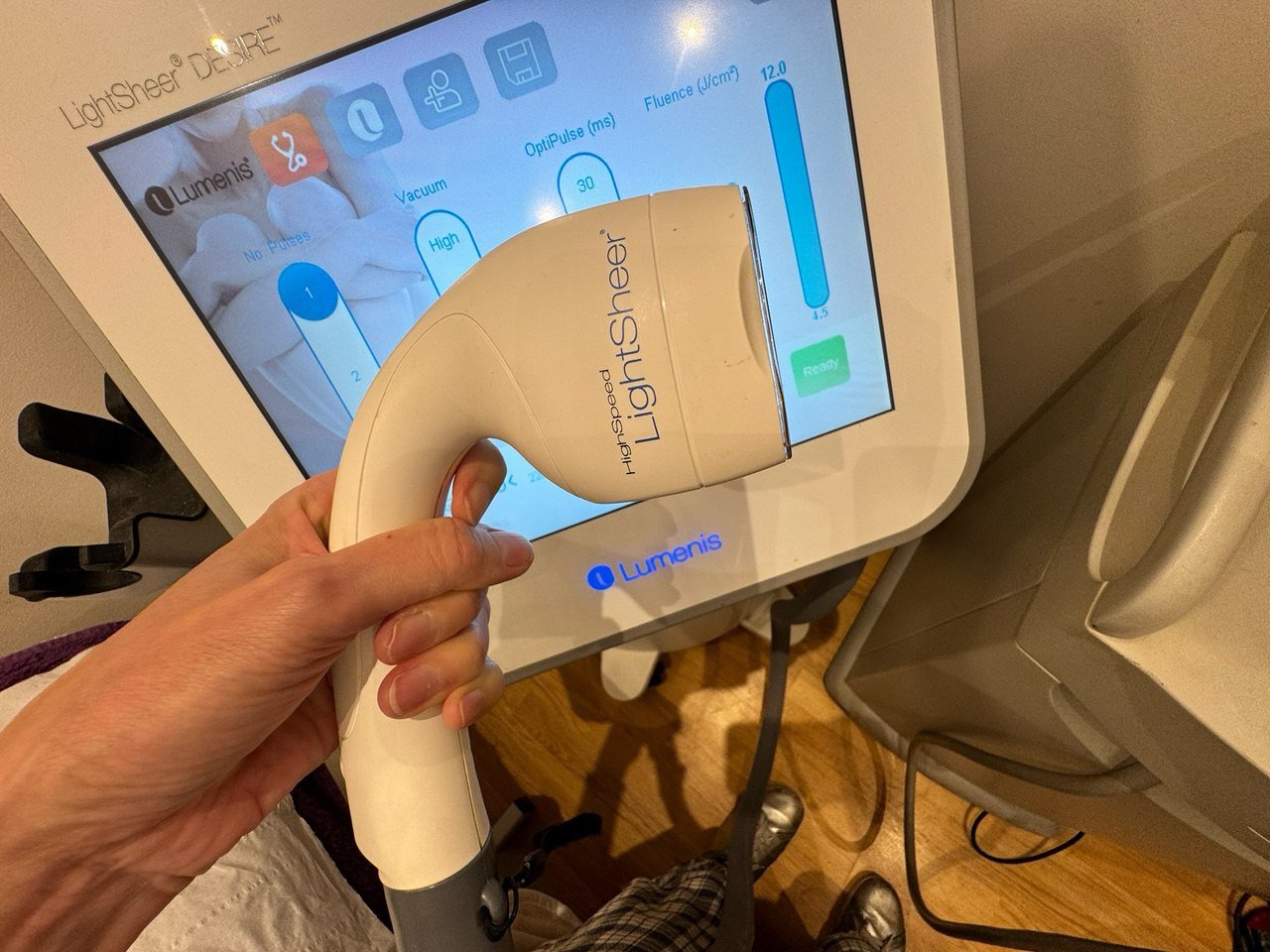
Benefits
- Efficiency: reduces treatment time with high-speed capabilities.
- Comfort: advanced cooling and suction technologies minimise pain for the sensitive areas and enhance patient’s comfort.
- Safety: suitable for all skin types, including darker tones, with built-in safety mechanisms.
- Precision: effectively targets hair follicles with minimal damage to the surrounding skin tissue.

Ideal Candidates
- Individuals seeking long-term hair reduction.
- Individuals whose pigment in the hair root is darker than the pigment in the skin.
- Individuals from 18 years and older.
- Individuals without grey or ginger hair.

Usage
- Treatment areas: legs, back, arms, underarms, bikini area, face, and other body parts.
- Sessions: typically requires 8-10 sessions for men and 6-8 sessions for women within the space of 12 months for optimal results, depending on hair and skin type.

Aftercare
- Avoid sun exposure.
- Do not go to sauna or take a hot shower or bath 3-7 days after your laser treatment (the darker your skin type, the longer it is recommended to avoid heat exposure to the treated area).
- Do not wear tight clothes that create friction to the treated area.
- Use alcohol-free moisturisers or aloe vera gel to aid recovery and hydration for the skin in the treated area.
- Follow specific post-treatment laser care instructions provided by our practitioners.







